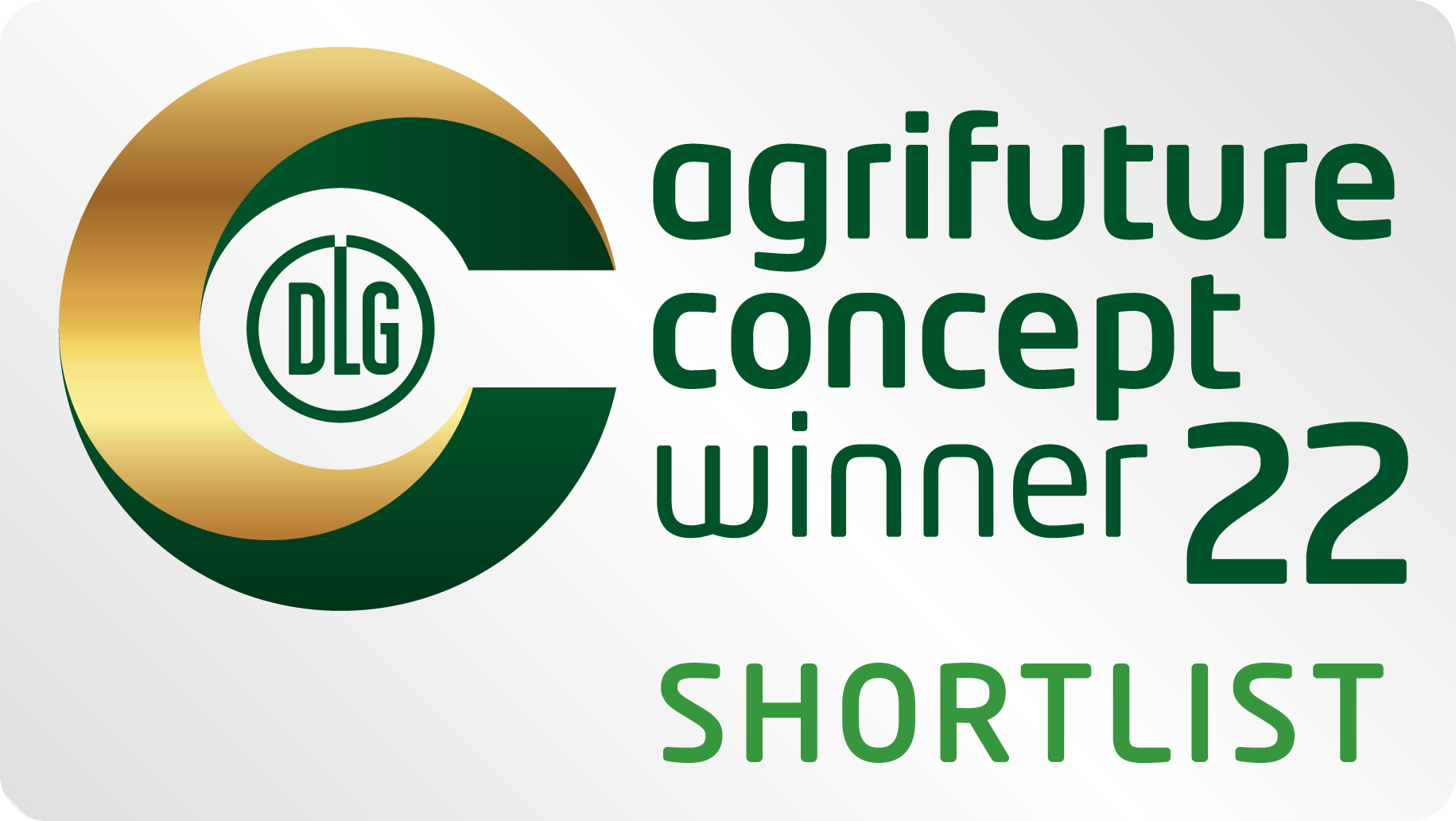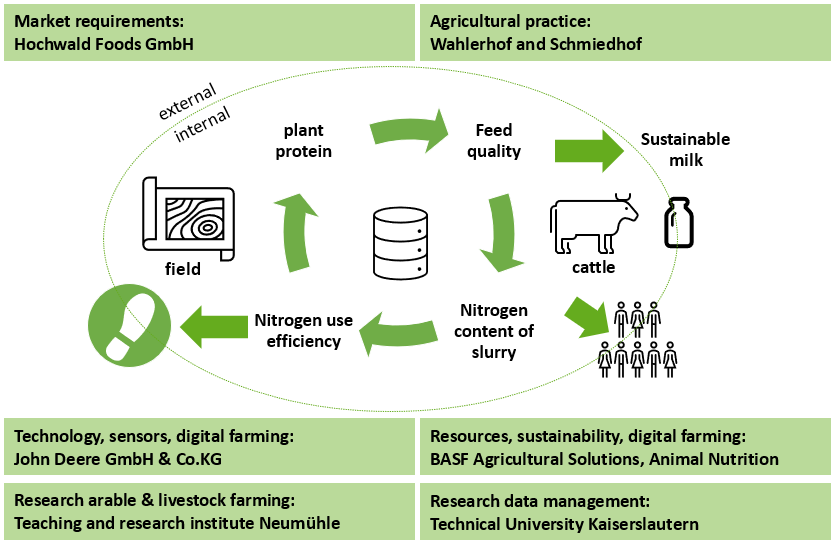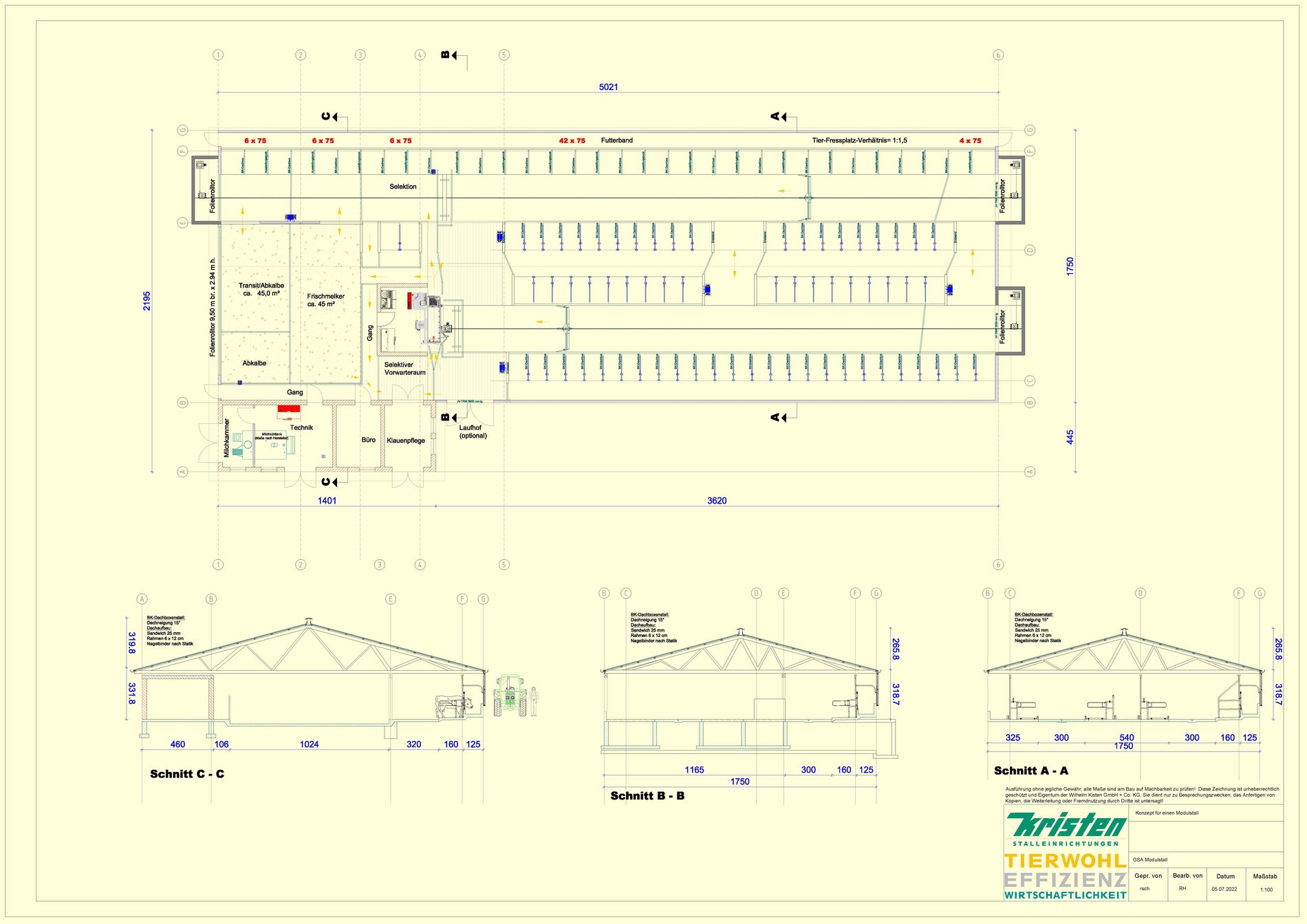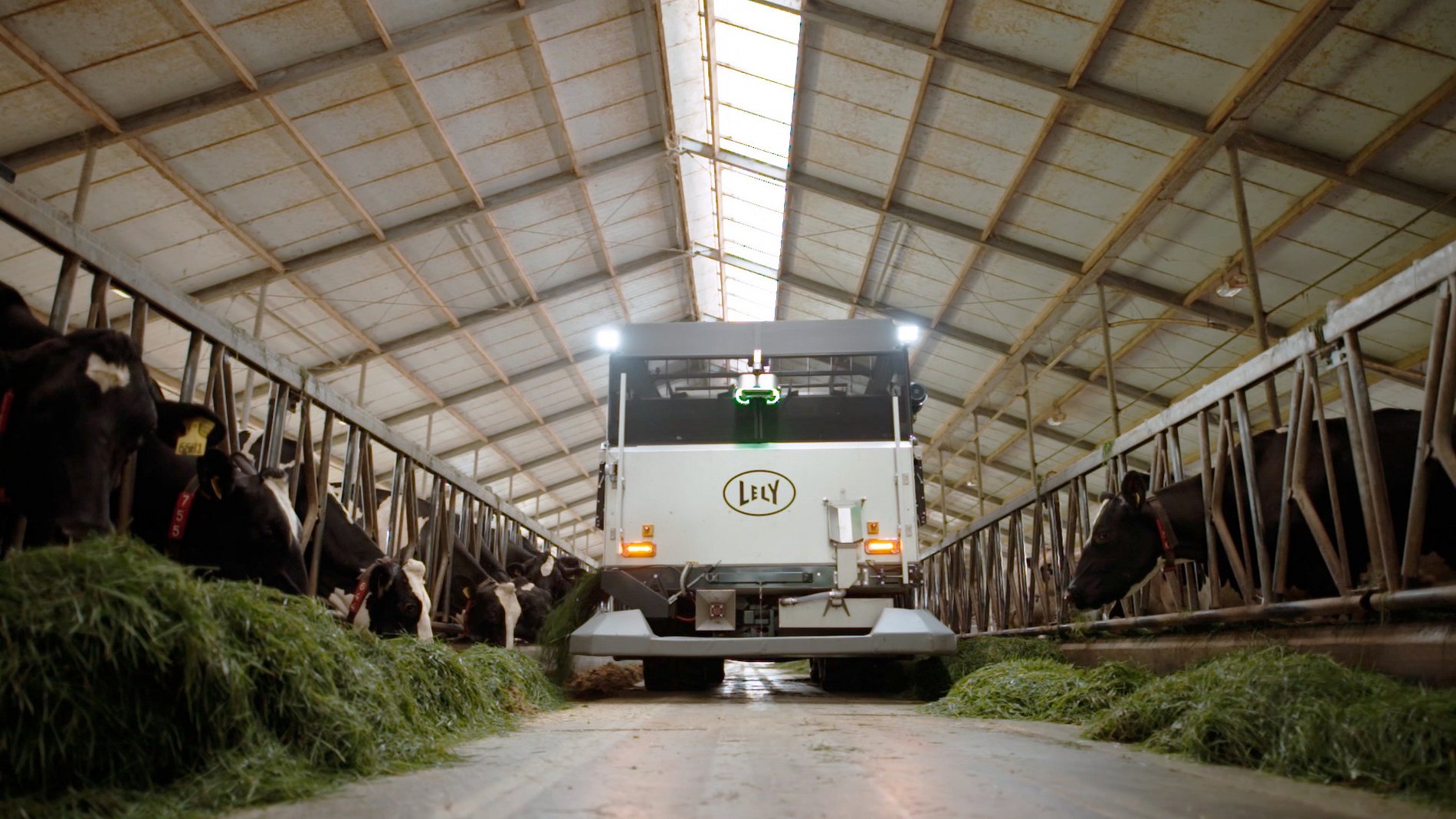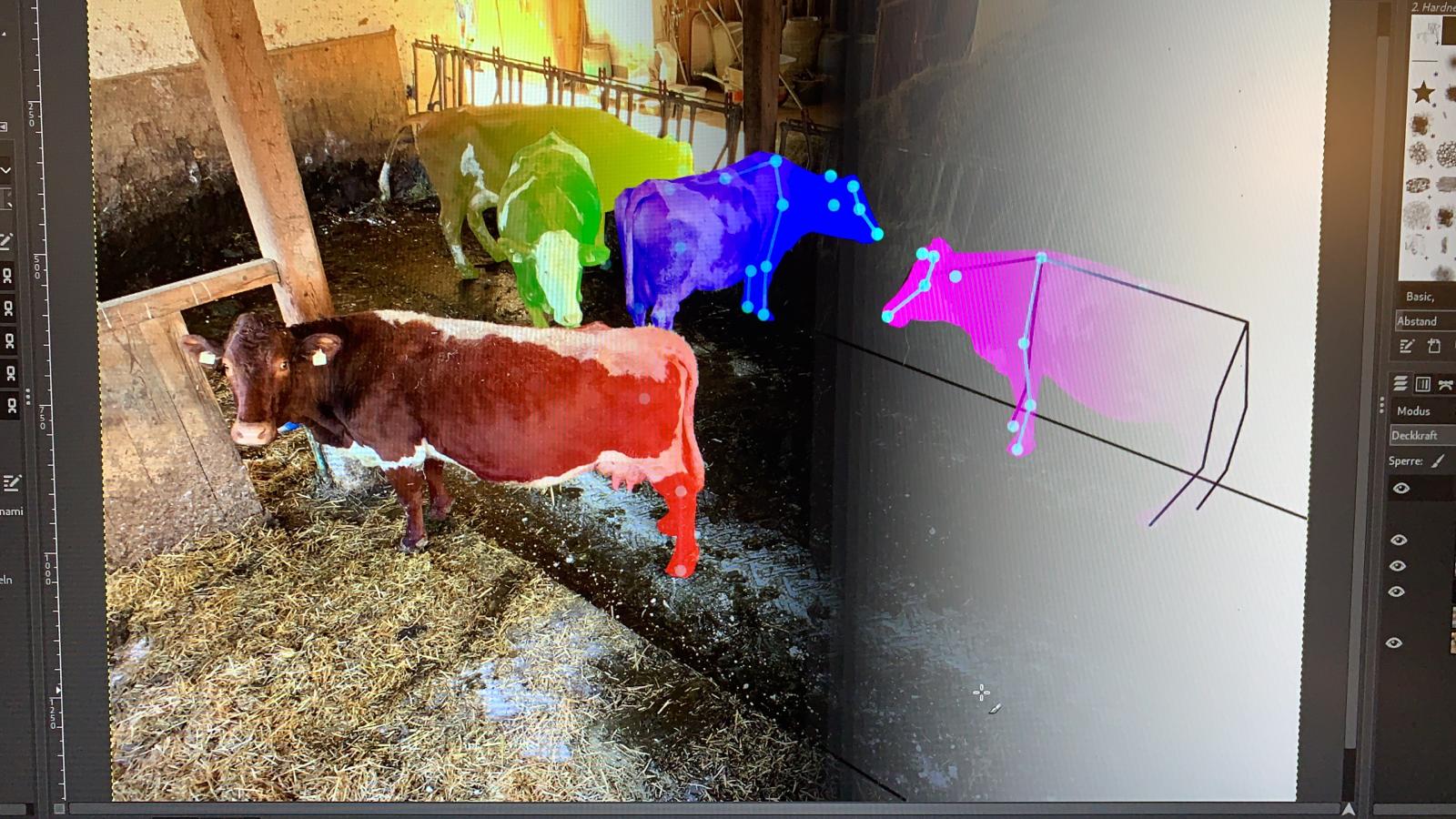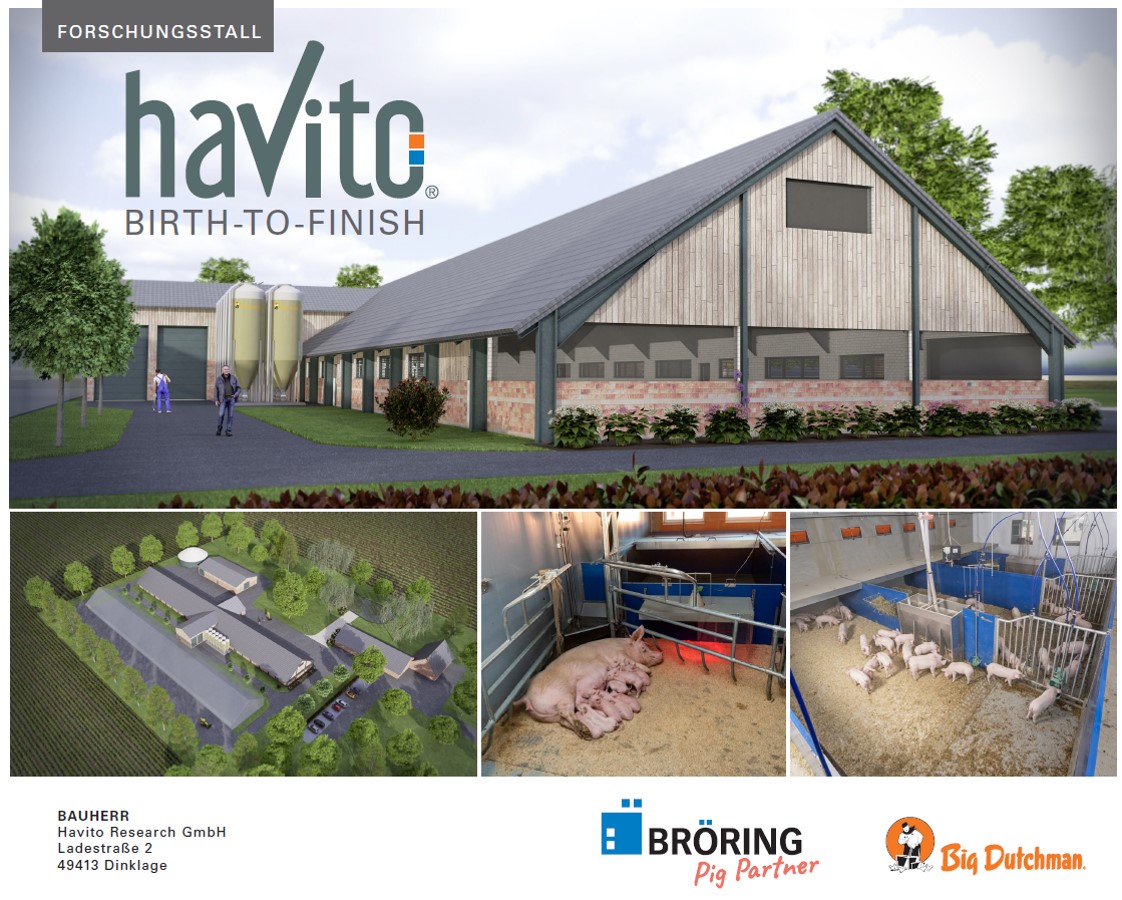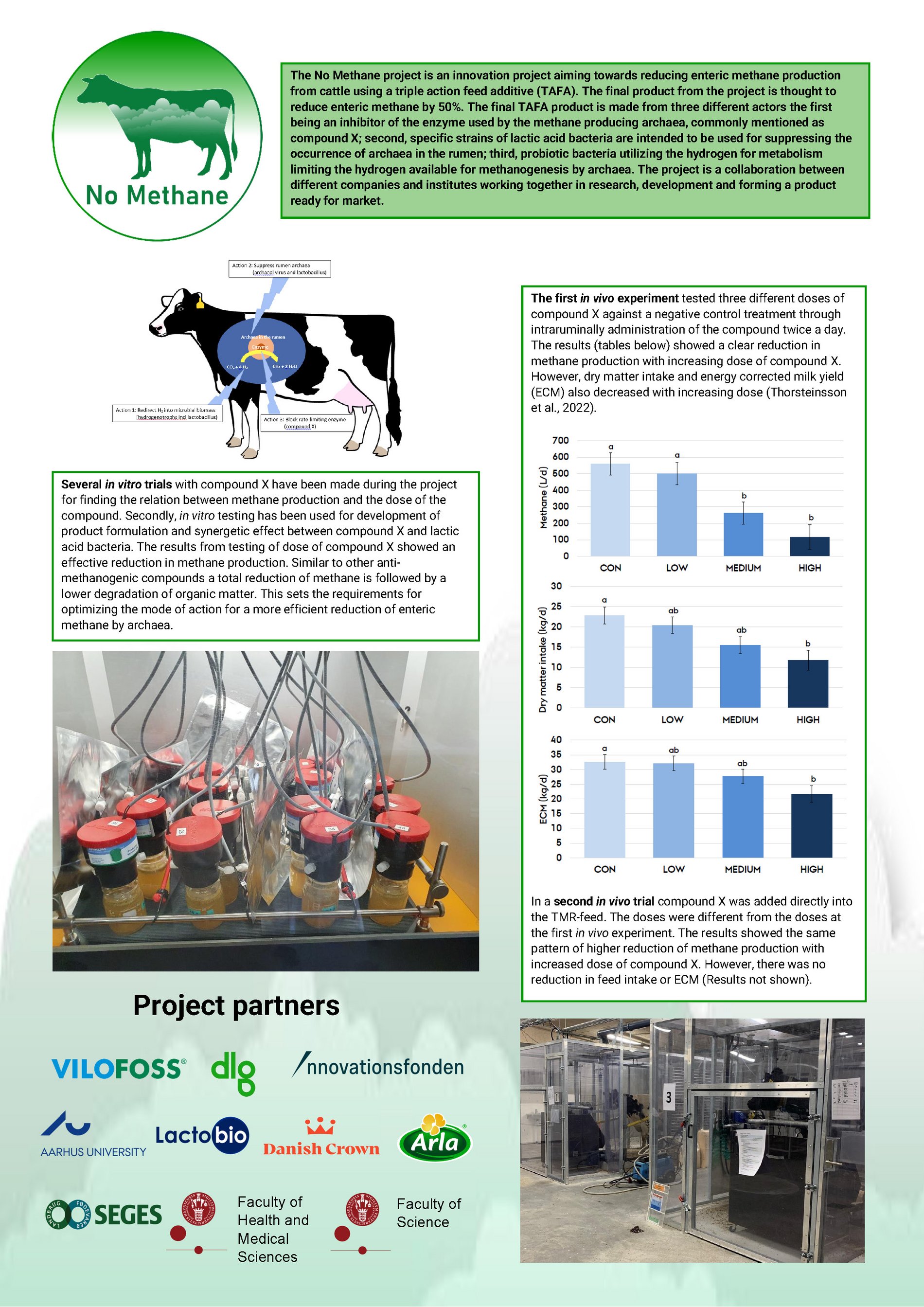DLG Agrifuture Concept Winner 2022
Shortlist of visionary and pioneering concepts
The new award scheme at EuroTier / EnergyDecentral “DLG Agrifuture Concepts” recognizes pioneering achievements and future visions that have not yet reached market maturity, but are in the development phase.In advance of EuroTier, the shortlist of innovations, potential winners of the award, is announced as follows.
BASF SE (Hall 21, Stand G31)
More Sustainable Milk
with: John Deere Walldorf GmbH & Co. KG, Lehr- und Versuchsanstalt Hofgut Neumühle (Neumühle Estate Training and Experimental Institute), Hochwald dairy, Technical University Kaiserslautern and two farms)
From a process perspective, the milk production value chain still currently bears similarity to a patchwork carpet. While data is being extensively collected, evaluated and used for management decisions in individual process chain links, data collection has either not been implemented at all elsewhere in the process or farmers are only able to use the data to a limited extent or not at all due to the absence of interfaces or incompatible systems.
In the ‘More Sustainable Milk’ concept, several companies and farmers have formed an alliance for the first time in order to improve milk productivity along the entire value chain by means of a data-based mass flow and sustainability calculation throughout the production process. Besides the lead partner, Lehr- und Versuchsanstalt Hofgut Neumühle, BASF SE, John Deere, the Hochwald dairy, Technical University Kaiserslautern and two farms are also involved in the project. In this concept, data is collected in each production step and consolidated in a central data dashboard. From feed production and composition and the animals’ state of health up to and including the discharge of nutrients and the reduction of emissions, the production process can be optimised on the basis of this data. Specifically, for instance, imported feeding stuffs can be replaced with by-products from food production and regionally produced feeding stuffs or nitrification inhibitors can be used in slurry. Near infrared spectroscopy (NIRS) for measuring nitrogen in the slurry and variable rate application (VRA) of nitrogen are used to adjust the applied nutrient volume to the needs of forage crops. The optimisation measures are rounded off by components such as animal health monitoring systems and CO2 evaluation models.
By optimising the processes to achieve sustainable and efficient milk production, the concept is also intended to provide the farmers with the business management information and decision-making aids required to manage their farms as efficiently as possible in the future and to comply with the necessary documentation obligations, e.g. in terms of nutrient and CO2 output.
Wilhelm Kristen GmbH (Hall 12, Stand C41)
Modular future cowshed
Conventional dairy barns involve high investments in construction materials. This is often due to individual planning, which is usually carried out top-down starting from the barn building, into which additional elements such as the ventilation system, barn installations and milking technology, etc. are then fitted.
The modular future cowshed concept from Wilhelm Kristen GmbH rethinks barn construction from the bottom up, focusing on maximum cow comfort and work efficiency, a simple and natural ventilation system and the simplest substructure possible based on the needs of the animals, employees and farm managers.
The modular design of the barn concept is aimed at robotic milking. Feeding is carried out using either a feed mixer wagon or a trough solution with a feed belt; a scraper or a robot solution is available for manure removal. In the building, some of the barn installations such as the cubicle and feeding space dividers also serve as the substructure for the roof construction. Since this construction method requires very few foundations, the amount of concrete work needed is reduced dramatically. This leads to lower construction costs and a shorter construction time, while increasing transparency and visibility in the building at the same time. The necessary cross-ventilation in the building is ensured by a gable with a chimney as well as the option of being able to open both of the side walls up to a height of 2.50 meter. All of the roofing options usually found on the market are available, up to and including green roofs or the installation of a photovoltaic system.
The modular barn system enables construction costs to be reduced by around 20-25 percent compared to conventional solutions. By focusing on the needs of the cows and with the optimized workflow that the building ensures in any case, the system increases efficiency during daily work in the barn at the same time. It thereby helps to ensure and improve the economic success of the farm following an investment of this magnitude.
Lely Deutschland GmbH (Hall 13, Stand B44)
Lely Exos
Harvesting green fodder is one of the most important operations in dairy farming. High-quality green fodder that is usually produced on one’s own land extensively determines the quality of the feed rations or the necessity of having to supplement them with concentrated and mineral feeding stuffs. The green fodder is therefore the basis for profitable milk production and is essential to the health of the animals.
With Exos, Lely is presenting a concept for the fully autonomous harvesting and feeding of fresh grass. Green feeding throughout the vegetation period offers multiple advantages.
For instance, the loss of energy due to the silaging process is eliminated, as is that part of the harvesting costs caused by the fact that successful silaging necessitates the achievement of high mowing, tedding, swathing and chopping efficiency even during time slots that are tight because of weather conditions. The fully electric Lely Exos provides the daily green fodder ration for the entire herd autonomously. The robot detects obstacles and navigates smoothly in the interior and exterior area. It is also possible to spread fertilizer during harvesting. Thanks to this and because mowing takes place at the right point in time, quick regrowth of the grassland is promoted and the soil is protected due to the comparatively low weight of the machine.
This enables the farm to benefit fully from the use of the entire vegetation period, to produce more milk from feed it has produced itself, and thereby to reduce labor, the number of machines needed and the purchase of additional feeding stuffs.
MECHATRONIK AUSTRIA GmbH (Hall 11, Stand D37)
KuhTracking (Cow Tracking)
Technical and, above all, electronic systems for herd management are on the advance throughout the animal production sector. So far, however, such systems have been limited to parameters that can be registered using one or more sensors. In this process, the data is usually collected continuously and transferred discontinuously, e.g. at the milking or feeding place, to a central software program for further processing.
The aim of the automated video analysis offered by the ‘KuhTracking’ system from Mechatronik Austria GmbH is to be able to measure and visualise animal-specific data continuously and in real time in the future.
The system, developed in cooperation with the Raumberg-Gumpenstein research institution, is based on linking modern camera technology and artificial intelligence (AI) with an intelligent herd management system to form a complex biometric tool. It offers information on the oestrus status, calving, animal behavior, feed consumption or lying times, for instance, and thereby enables the animals’ health to be monitored continuously.
If all necessary information is stored centrally and is just a few clicks away, and the system is able to output early warnings, diseases can be recognised earlier and the farmer and vet are able to introduce the necessary countermeasures faster. This shortens the recovery process, minimizes losses, and reduces veterinary costs, which ultimately improves both profitability and animal welfare. Transparency and traceability are also ensured within the value chain thanks to the automated provision of data for individual animals.
Big Dutchman International GmbH (Hall 17, Stand B22)
Havito – Birth to Finish
with: H. Bröring GmbH & Co. KG
Modern sty systems in pig production are based on evolution towards increased efficiency and labour productivity by increasing biological performance. In the future, animal welfare aspects will play a significantly greater role. This means that processes and concepts will have to be redefined or adapted to increased animal welfare without taking a step backwards in terms of efficiency or employee accident protection, for instance.
A structured pen, in which the sow can give birth and the piglets remain throughout the entire rearing and fattening period without being relocated, is now being presented for the first time in the form of the Havito – Birth to Finish concept from Big Dutchman International GmbH and Bröring GmbH & Co. KG.
The system is based on the PigT pig toilet concept introduced in 2018 for use in rearing and fattening, which has now also been extended to include sows. Thanks to the closed surface of the whole pen and the continuous separation of urine and faeces, the entire pen can be littered with organic material, and the pigs themselves subdivide it into a lying area, a manipulation area and a toilet area. This is supported through a micro-climate solution and optionally with heating and cooling options in the floor.
The concept is designed for a 21-week cycle from birth to slaughter, including a 5-6-week suckling period and a 15-week rearing/fattening phase. The piglets born in the pen remain there throughout their entire lives, whereby the concept also takes the growing animals’ increasing spatial requirements into consideration. The sow, too, will always give birth in the same sty. The piglets learn from their mother how to find food; the feeding place remains the same throughout their lives. Elements required for the piglets’ birth in the open farrowing pen area can be folded up during rearing.
The increasing implementation of animal welfare aspects is one of the biggest drivers of structural change in animal production worldwide, and will have a particular impact on facilities for pigs due to their historic evolution. The Havito Birth-to-Finish husbandry concept is an interesting and smart answer to future challenges.
VILOFOSS GROUP (Hall 21, Stand J08)
Product X
Ruminants are responsible for around one third of global methane emissions. Since methane is vastly more harmful to the climate than CO2, the climate protection potential of reducing methane emissions from cattle farming is considered to be extensive. Previous approaches have pursued the objective of reducing the environmental impacts and have foreseen changes in feed composition such as increasing the fat content in feed or the concentrate-to-feed ratio, for instance, or have been aimed at genetic selection for lower methane production. However, these concepts are unable to solve the pressing problem of reducing environmental pollution caused by ruminants with the necessary speed.
With ‘Product X’, VILOFOSS GROUP is now aiming to reduce methane emissions from cattle at the source. The reason for this is that this climate gas is not produced by the cow itself, but by methanogenic archaebacteria that live as symbionts in the rumen and help the animals to digest their otherwise indigestible feed. ‘Product X’ will be a chemically-based feed additive that farmers add to the ration as part of standard feeding. Its job will be to inhibit the corresponding enzyme in the methane synthesis pathway of the archaebacteria without itself displaying negative characteristics for the cows or their feed conversion. Estimates so far indicate that ‘Product X’ will be able to reduce methane production in dairy cows by around 30 percent, whereas other approaches are barely able to achieve a reduction of 15 percent.
‘Product X’ therefore promises to significantly inhibit methane production via the use of feed additives, can be easily implemented in the majority of production systems and has the potential to make a noticeable contribution to meeting climate protection targets.
